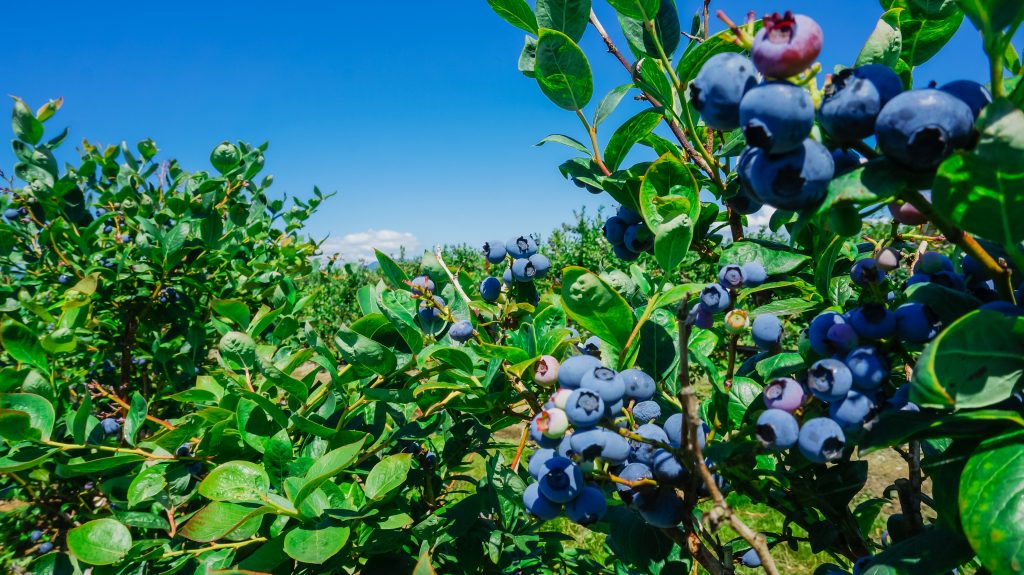
Fall is not normally when you would find Florida-grown blueberries at the grocery store. But that may change, thanks to University of Florida Institute of Food and Agricultural Sciences (UF/IFAS) researchers.
This comes as good news for consumers and growers, who could expand their market window by several months.
The fruit normally grows and is harvested from February through May in Florida. That means that typically, in the fall, you can only buy imported blueberries.

UF/IFAS researchers may have found the right genes to develop Florida-grown blueberries in what is normally considered the off-season.
Research Study
In a newly published study, scientists evaluated 536 varieties of the Southern Highbush Blueberry on two commercial farms in Waldo – northeast of Gainesville — during the fall of 2019 and the fall of 2021.
“Blueberries are a short-day plant, meaning that flower organs are formed when days are short in the fall and then flower in the spring,” said Patricio Muñoz, the blueberry breeder and a UF/IFAS associate professor of horticultural sciences. “But we always observed a few varieties that will produce in the fall, meaning they have the capacity to develop flowers when days are long. Basically, these are day-length insensitive. So, we developed a study to determine whether we could promote a profitable fall production in Florida.”
Scientists confirmed their hypothesis.
“Our results tell us that there is a genetic mechanism operating in those off-season plants that is different from the conventional plants with the traditional spring flowering,” said Mariana Neves da Silva, who led the study as part of her doctoral dissertation under the supervision of Muñoz in the UF/IFAS College of Agricultural and Life Sciences.
How Can It Help?
Florida blueberries grow abundantly in such counties as Alachua, Hardee, Hernando, Manatee, Orange, Polk and Putnam counties. So, how do the findings from the current study help Florida blueberry growers?
“In the fall, blueberries are imported to the United States, and prices can be high due to the lack of domestic production,” said Neves da Silva. “Producing blueberries in the fall could help Florida growers to reach that high-price market window by providing fresh blueberries. Further research is required in order to improve that trait, and also to gather more data regarding yield and management.”
In the future, horticultural scientists expect to develop cultivars and management practices.
“We are working with Dr. Gerardo Nunez, an assistant professor in horticultural sciences to develop the recommended management for these varieties,” Muñoz said.










